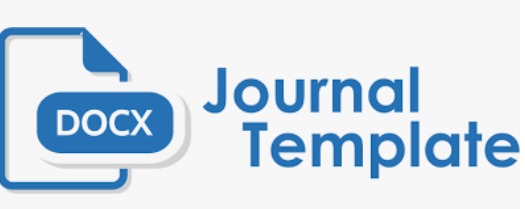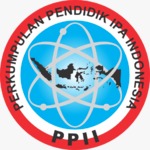Pengembangan Laboratorium Virtual Gelombang Bunyi Berbasis HTML5, CSS, Dan JavaScript
DOI:
https://doi.org/10.29408/kpj.v6i2.6474Keywords:
Virtual laboratory, HTML5, CSS, JavaScript, sound waveAbstract
This development research aims to produce and test the validity and practicality of the product in the form of a sound wave virtual laboratory so that it can be used as a learning support. Sound wave is an abstract physics concept. The type of research used in this research is research and development with research design, namely research on the development of 4D models (Define, Design, Develop and Disseminate). The define stage includes initial and final analysis, user analysis and device requirements analysis. The design stage includes the initial design of the virtual laboratory, format selection and design improvements. The develop stage includes product creation, product validation, product revision, limited trials. The disseminate stage is carried out by distributing the virtual laboratory by uploading to the website the sound wave virtual laboratory which is developed based on HTML, CSS, and JavaScript. The validity of the virtual laboratory was calculated using CVI with the acquisition of expert validators and practitioner validators of 0.96 with valid criteria. While the reliability of the virtual laboratory is calculated using the percentage of agreement with the acquisition of expert validators and practitioner validators 92.06% in the reliable category. The results of the practicality of the virtual laboratory based on student responses showed results of 84.38% in the very practical category. Thus the sound wave virtual laboratory based on HTML 5, CSS, and JavaScript is valid and very practical to use to support high school physics learning.References
Anam, K. (2016). Pembelajaran Berbasis Inkuiri: Metode dan Aplikasi. Yogyakarta: Pustaka Belajar.
Arsanty, V., N. & Wiyatmo, Y. (2017). Pengembangan Perangkat Pembelajaran Fisika Berbasis Model Pembelajaran STS dalam Peningkatan Penguasaan Materi dan Pencapaian Kreativitas Peserta Didik SMA. Jurnal Pendidikan Fisika, 6 (1), 23-32.
Binarso, Y. A., Sarwoko, E, A. & Bahtiar, N. (2012). Pembangunan Sistem Informasi Alumni Berbasis Web Pada Program Studi Teknik Informatika Universitas Diponegoro. Journal of Informatic and Technology, 1 (1), 72-84.
Dwipangestu, R., Mayub, A. & Rohadi, N. (2018). Pengembangan Desain Media Pembelajaran Fisika SMA Berbasis Video Pada Materi Gelombang Bunyi. Jurnal Kumparan Fisika, 1 (1), 48-55.
Gunawan, G., Harjono, A. & Sahidu, H. (2015). Studi Pendahuluan Pada Upaya Pengembangan Laboratorium Virtual Bagi Calon Guru Fisika. Jurnal Pendidikan Fisika dan Teknologi, 1 (2), 140-145.
Hermansyah, H., Gunawan, G. & Herayanti, Lovy. (2015). Pengaruh Penggunaan Laboratorium Virtual Terhadap Penguasaan Konsep Dan Kemampuan Berpikir Kreatif Siswa Pada Materi Getaran Dan Gelombang. Jurnal Pendidikan Fisika dan Teknologi, 1 (2), 97-102.
Istyowati, A., Kusairi, S. & Handayanto, K., S. (2017). Analisis Pembelajaran dan Kesulitan Siswa SMA Kelas XI Terhadap Penguasaan Konsep Fisika. In Biologi, Pembelajaran, dan Linkungan Hidup Perspektif Interdisipliner (pp. 237-243). Malang, Indonesia: Prodi Pendidikan Biologi, Universitas Muhammadiyah Malang.
Jasmadi, J. (2018). Penggunaan Media Virtual Laboratory Dalam Pembelajaran Konsep Optik Geometri di SMK Kesehatan Asy-Syifa School banda Aceh. Skripsi. Banda Aceh: Universitas Islam Negeri Ar-Raniry.
Lawhse, C. H. (1975). A Quantitive Approach to Content Validity. Journal Personnel Phsycology, pp. 536-575.
Lesmono, D. A., Wahyuni, S. & Fitria, S. (2012). Pengembangan Petunjuk Praktikum Fisika Berbasis Laboratorium Virtual (Virtual Laboratory) Pada Pembelajaran Fisika di SMP/MTs. Jurnal Pembelajaran Fisika, 1, (3), 272-277.
Luki, N. & Kustijono, R. (2017). Pengembangan Laboratorium Virtual Berbasis Algodoo Untuk Melatihkan Keterampilan Proses Sains Siswa Pada Pokok Bahasan Gerak Parabola. Jurnal Inovasi Pendidikan Fisika, 6(3), 67-75.
Manihuruk, E. & Ginting, E. M. (2021). Pengaruh Model Pembelajaran Inquiry Training Berbantuan Laboratorium Virtual Terhadap hasil Belajar Siswa Pada Materi Gelombang Bunyi di Kelas XI Semester II SMA Negeri 7 Medan T.P 2018/2019. Jurnal Inovasi Pembelajaran Fisika, 9 (3), 10-16.
Masita, I. S., Donuata, B. P., Agustinus A. E. & Rusdin, E. M. (2020). Penggunaan PhET Simulation Dalam Meningkatan Pemahaman Konsep Fisika Peserta Didik. Jurnal Penelitian Pendidikan Fisika, 5 (2), 136-141.
McDermott, L. C. (1990). A Perspective on Teacher Preparation in Physics and Other Sciences. American Journal of Physics, 58 (8), 734-742.
Muslim, B. & Dayana, L. (2016). Sistem Informasi Peraturan Daerah (Perda) Kota Pagar Alam Berbasis Web. Jurnal Ilmiah Betrik, 7(01), 36-49.
Nurdiyanto, R., Malik, E., Febriani, F. & Pujianto, P. (2021). Pengembangan Virtual Lab Gelombang Cahaya Untuk Pembelajaran Aktif Dan Kemandirian Belajar Di Era New Normal. Kumpulan Karya Tulis Ilmiah Tingkat Nasional 2021, pp. 1-14.
Nurrita, T. (2018). Pengembangan Media Pembelajaran Untuk Meningkatkan Hasil Belajar Siswa. Misykat, 3(1), 171-187.
Polit, D. F. & Beck, C. T. (2006). The content validity index: are you sure you know what’s being reported? Critique and recommendations. Research in Nursing & Health, 29 (5): 489–97.
Setiawan, A. A., Lumenta, A. & Sompie, S. (2019). Racangan Bangun Aplikasi Unsrat E-Catalog. Jurnal Teknik Informatika, 14(4), 1-9.
Sofi’ah, S., Sugianto, S. & Sugiyanto, S. (2017). Pengembangan Laboratorium Virtual Berbasis VRML (Virtual Reality Modelling Language) Pada Materi Teori Kinetik Gas. Unnes Physics Education Journal, 6 (1), 82-90.
Suseno, Nyoto. (2014). Pemetaan Analogi Pada Konsep Abstrak Fisika. Jurnal Pendidikan Fisika, 2(2), 1-10.
Thiagarajan, T., Sivasailam, And Others. (1974). Instructional Development for Training Teachers of Exceptional Children: A Sourcebook. Bloomington: Indiana University.
Wibawanto, W. (2020). Laboratorium Virtual Konsep Dan Pengembangan Simulasi Fisika. Semarang: Penerbit LPPM UNNES.
Yuniarti, F., Dewi, P & Susanti, R. (2012). Pengembangan Virtual Laboratory Sebagai Media Pembelajaran Berbasis Komputer Pada Materi Pembiakan Virus. Unnes Journal of Biology Education, 1(1), 58-86.









